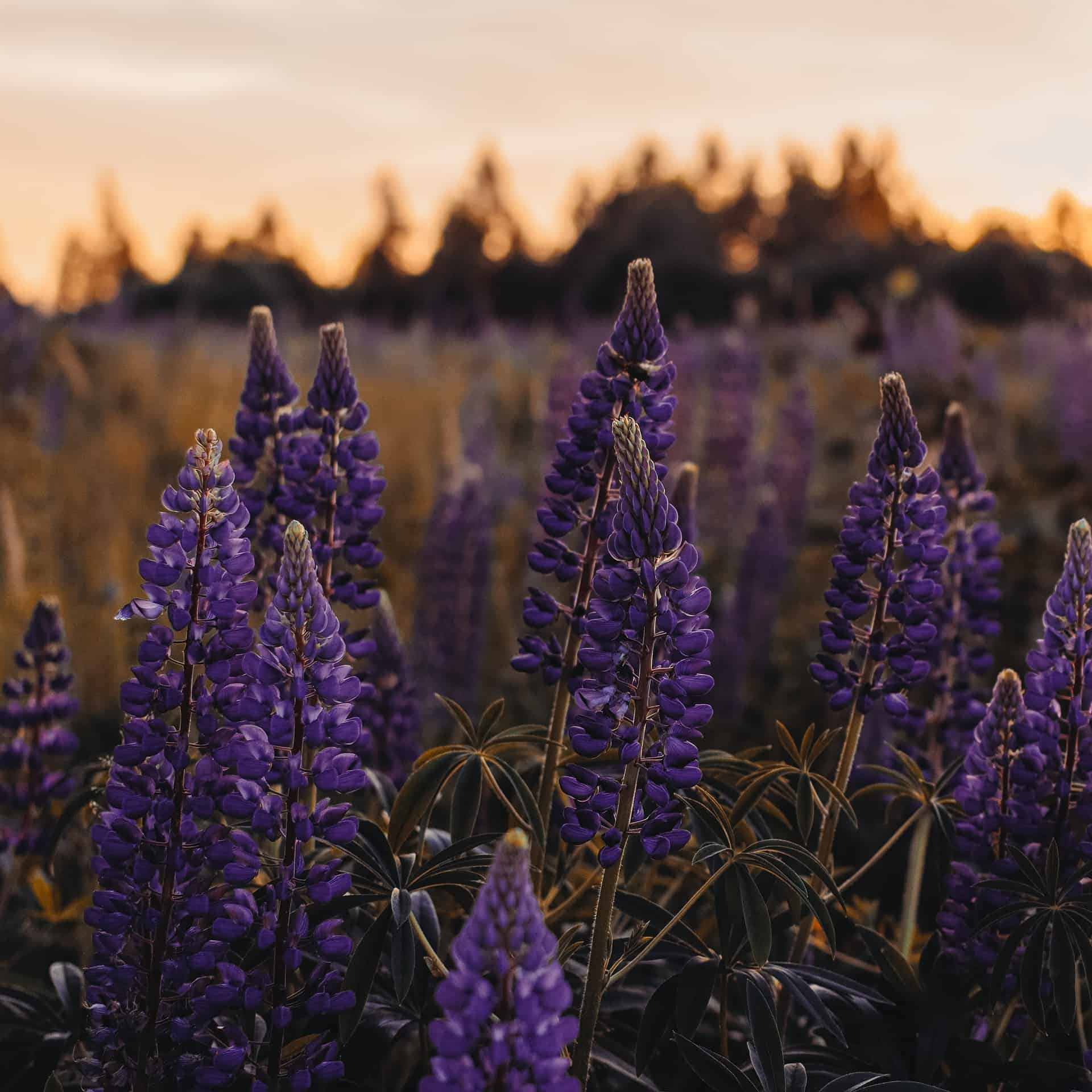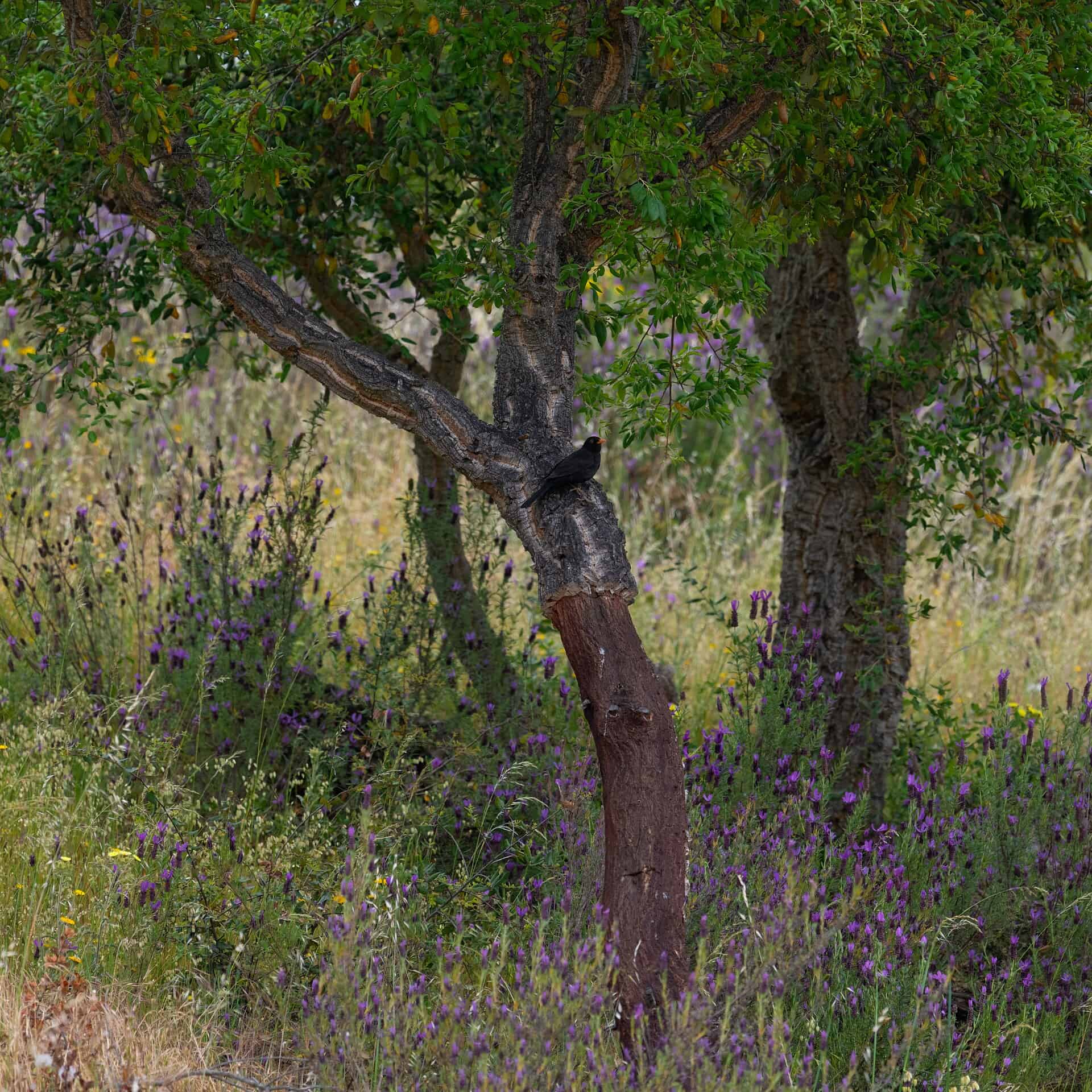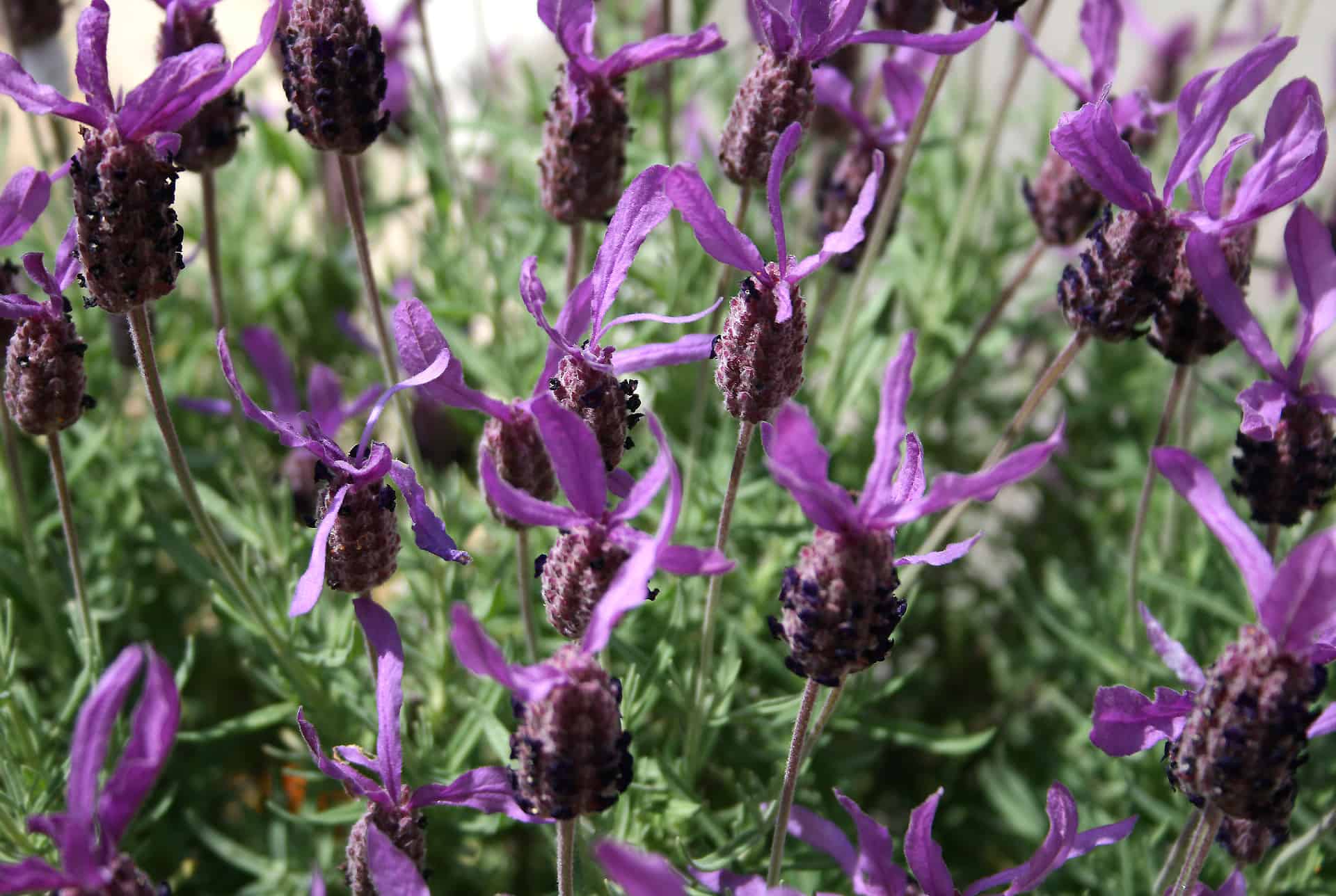No products in the cart.
Are you planning to become a new plant parent? Then a long-valued specimen is Lavender plants.
The Lavender plant has a strong aroma, toddy stems, silvery leaves, and gorgeous purple flower spikes. Still, the size can become imposing, so why not consider growing Lavender trees instead?
The Lavender tree is like magic from a fairy tale, as you can prune or shape these woody plants into any form. The best part is there a quite a few species you can grow as a potted lavender tree.
So stay a while longer to learn more about lavender tree care here!
Botanical Name: Lavandula
Other Name: Lavender
Native Area: Mediterranean Region
Plant Type: Herb
Growth: Two to Three Feet in Height
Fertilizer: Rarely Needed
Light Requirement: Full Sun
Propagation: Cuttings
Soil Type: Well-Draining Soil
Temperature: Dry, warm temperatures
Toxicity: Toxic to Pets
Watering: Moist Soil Left to Dry Between Watering
USDA Zones: 5-9
More About Lavender Plants

Lavender is a herb native to the Mediterranean and surrounding areas. Still, it thrives when planted in the right growing conditions. The beautiful purple flowers have an aromatic scent in muted green to purple.
The best part is the herb is good for you as the aroma is calming and used in bath products. In contrast, the dead flowers can dry to use as potpourri or in soaps. Then you have the Lavender essential oils used as bath or skin care products.
When thinking of the plant lavender, the first thing coming to mind is the English Lavender. But, of course, you can grow these in the garden or in pots. But there is a new kid on the block, lavender trees.
The trees have the same qualities as other plants in the family, with gorgeous leaves and flowers. But it can take on a new shape with the foliage sitting on top with a bare wooden stem to form a topiary tree.
Still, how does a Lavender tree form? Well, the tree forms when you trim it from the top, training them to grow as a tree. The tree shape remains about two to three feet, but it can appear taller when housed in a container.
The tree form looks nice in a pot when placed on the patio or indoors. The best is to select a container that suits your style. You can put the small lavender tree in a raised bed or the garden.
Lavender Tree Care Tips

Whether you grow a Lavender tree indoors or as a Lavender topiary, an important thing to remember is that it grows in a harsh climate and is quite hardy. Most Lavender species grown outdoors can be grown inside by following simple steps.
Lavender Plant Placement
Whether you grow your lavender trees in landscaping or a container, your plants need plenty of sunlight for at least six hours a day. Hence, choose a sunny spot to grow your lavender tree indoors or on the patio.
We recommend a sunny window on the south side to enjoy the morning sun with some afternoon shade. Alternatively, you can place most species at a west window. Another important thing is to keep rotating your containers weekly to prevent spindly growth.
Even a too-shady spot can lead to weak growth and will not produce those gorgeous purple flowers when the flowering season arrives.
Lavender Topiaries Prefers Well Drained Soil

If you want to keep your plant healthy, it is best to grow your lavender plant in suitable soil. Compared to other plants, Lavender does not need nutrient-rich soil. Instead, the Lavender tree prefers slightly alkaline soil, like loamy or sandy soil.
You can combine two parts potting soil with one part gravel or one part perlite. To make the soil more acidic, you can add some garden lime to provide similar growing needs for your plant.
Still, it needs to be well-draining soil, and if you have clay soil, add some perlite or sand to the potting mix. These container plants are drought tolerant and do not enjoy too much moisture as it can lead to root rot.
Watering Your Lavender Topiary Tree
For healthy growth, it helps to water your lavender plant well by drenching it and allowing excess moisture to drain out of the drainage holes. Then leave the soil to dry between watering to prevent overwatering.
Still, please do not allow the soil to dry completely, as it can turn the leaves yellow. Another thing to remember when moving your lavender tree outside is that it will need more water, especially as it needs full sunlight to flourish.
Fertilizing Your Lavender Plants
Fertilizing your lavender plant is an issue as your plant needs less than most plants. Hence, overfertilizing can lead to a bushy growth with yellow foliage and no blooms.
We recommend feeding your lavender plant before the start of the growing season in early spring and summer. Another helpful thing is to add an inch of compost around your plant as an organic alternative instead of an all-purpose water-soluble fertilizer.
But if you prefer investing in a feed, choose one made for Lavender plants, like an organic-rich Phosphorous one for your potted lavender tree.
Temperatures and Humidity

Providing your Lavender with the right temperature and humidity levels leads to healthy growth and flowering. The ideal range for your plant during spring to summer is 70°F (21°C) during the day and 50-55°F (10-13°C) at night-time.
During the dormant season of early fall to winter, the best temperature is 60-65°F (15-18°C) during the day and 45-50°F (7-10°C) at night. The Lavender prefers low humidity compared to other species of tropical plants.
Lavender plants are hardy perennial herbs and can become damaged in an environment with a lot of moisture. The important thing is to provide your topiary tree with enough air circulation and good ventilation.
Overwintering care for a Lavender plant
When you have a potted Lavender plant that resides outdoors, it will need extra winter protection in zone 4 and below. Hence, it helps to bring in your containers gradually to avoid shock.
Once the temperature drops below 60˚ F, we recommend bringing your lavender tree in for a few hours daily. Keep your plant in a sunny spot to receive full sun. You can extend the hours daily to help your plant acclimate to its new environment.
Remember to rotate the pot when caring for a lavender during winter indoors. A crucial tip for caring for Lavender indoors is to cut back on watering. Then, once spring returns, follow the same steps to acclimate your Lavender plants outside.
In regions where you can keep your lavender plant outside, it helps to add a few inches of mulch around the base to help retain water and keep the root ball protected.
Pot Size and Pruning
When choosing a container for your lavender tree, select one 12 to 16 inches in diameter. The fantastic thing is that your Lavandula species do not need repotting often. Instead, fill up the pots with the recommended soil with enough drainage.
Your Lavender topiary tree needs annual pruning to provide them with ornamental shapes. Furthermore, pruning helps with growth and encourages flowering. If not pruned, your lavender tree will form a sizeable woody base shortening its lifespan.
The best time to prune is with the first flowers in early spring and then again in fall. You can do this with sterilized pruning shears, locate the woody base, cut about three inches above it, and be careful not to damage new growth.
Also, do not cut the woody stem or too much foliage by leaving some greenery on the stem. Another tip is to do deadheading of spent flowers. You can use the dead flowers in the home to repel moths and other insects.
Propagating Lavender Tree
Everyone loves the smell of Lavender flowers, and the best way to ensure you have them available at all times is by propagating your plants. Here are some simple steps you can follow:
Following the Lavender flowers’ bloom, choose a side shoot without any buds.
We recommend cutting low to the root taking a stem several inches long.
At the bottom, scrape off the bark on one side using a knife and remove the bottom leaves.
Fill your pot with potting soil and dip the cut end optional in rooting hormone.
Insert the cut end of the stem into the soil and water.
Cover the pot and whole plant with a plastic bag to retain moisture and keep it in a warm shaded area.
Once you can gently tug at the stem without moving, you can remove the bag.
Water when the soil is dry; after a few weeks, you can feed it with a water-soluble 1/4 strength feed once a week.
After a few weeks, you can transplant your seedlings to a larger container and start with your lavender tree training to start forming a central stem and bushy crown with regular pruning.
Lavender Varieties to Grow as Trees
When selecting Lavender, there are wide recommended varieties to grow in tree form.
Spanish Lavender Tree

Many people refer to it as the French Lavender or Butterfly 🦋 Lavender. It produces distinct bracks looking like rabbit ears. It grows from mid-spring to late summer with a bushy mound up to 24 inches.
Compared to other Lavender cultivars, it can tolerate high humidity and is hardy in zones 8 to 9. While it is mainly grown as ground cover or mass planting. But you can still grow it as a tree in a pot.
English Lavender Tree

Everyone knows the true Lavender that blooms from early to late summer. The tree is hardy in USDA zones 5 to 9 and you can cultivate them outdoors. It can survive winter outdoors.
Portuguese Lavender
 Portuguese lavender tree @flickr
Portuguese lavender tree @flickr
The plant is native to the Mediterranean with intense aromatic flowers and is hardy in zones 6 to 8. It is best grown outdoors; depending on the weather, you can expect it to bloom from late spring to summer.
Common Pests and Diseases
Once your lavender tree establishes its roots, it needs moderate watering with well-draining soil and not too much fertilizer. But as with most plants, it can be bothered by pests and diseases. For example, it can become the home of aphids, mealybugs, spider mites, and nematodes.
You can witness yellowing leaves, wilting, and even root rot. These can result from overwatering your plants, too much humidity, insufficient air circulation, pruning, or a bad potting mix with the wrong soil pH.
Frequently Asked Questions
We recommend buying a small plant to prune it from a young plant to help achieve a tree form. First, remove the side stems and leave the strongest central stem to form the main trunk.
Then place a bamboo cane in the pot, tie your plant to it, and care for a Lavender plant as you would for one growing outside.
Lavender plants benefit by infusing flowers to make tea or essential oils. But you can also eat the leaves, adding flavor to soups, salads, and other dishes.
After harvesting the flowers, you can tie them in bundles to hang upside down in a cool, dark, ventilated space. When dry, you can remove the flowers from the stem and keep them in an airtight container.
The best time to harvest flowers is in the morning before the heat sets in. Only harvest flowers in full bloom by looking at the buds form as they turn purple. Then cut the stem a couple of inches below the flower head.
Yes, the mosquitoes do not like the smell of Lavender flowers. Hence, you can use the plant parts to make a natural insect repellent.
The good news is that Plantly has the Lavender tree available for you to buy without needing to train seedlings.
Whether you want to buy, sell, or simply reach out to other plant enthusiasts, Plantly is the right place to be!


